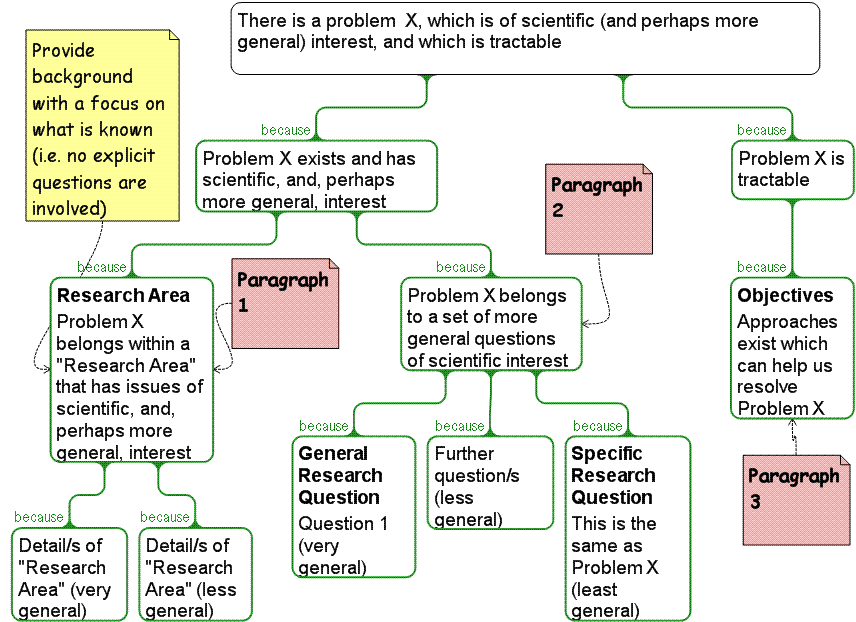The Science Of Scientific Writing Set G The Introduction The Pivot Point of the Paper Challenges to Coherence Exercise 1 Hand in Glove Exercise 2 Final Page .
OVERVIEW: The way to well-written science
PART I: Paragraphs and Sentences
SET A: Paragraphs: The Maps Behind Them
SET B: Paragraphs: Using Maps to Meet Readers' Expectations
SET C: Paragraphs with Something Extra: Points and Tails
SET D: The Generic Section: Expectations and Maps as Blueprints
SET E: Scientific Sections: The Methods and Results
SET F: Scientific Sections: The Discussion
SET G : Scientific Sections: The Introduction
SET H : Sentences
SET I : The Paper as a Whole
PART II: The Paper and its Sections
SET 1: Argument Parts
SET 2: Indicator Words
SET 4: Locating Arguments in Prose
SET 5: Rationale's Essay Planner
SET 6: Evidence in Arguments: Basis Boxes
Synthesis 1: Position-Early Paragraphs
Synthesis 2: Position-Final Paragraphs
Synthesis 3: Writing a Discussion I
Synthesis 4: Writing a Discussion II
Hand in Glove
The Introduction is nearly always written last since, until you have completed the Discussion, you do not know what you want to introduce. The content of the Introduction is largely shaped by the content of the Discussion, and closely "fits over" it in the same way that a snug glove fits the hand. There are two aspects to this close fit:
* All the major core points of the Discussion should be foreshadowed in the Introduction, including the content of both the non-speculative and speculative conent
- The speculative content will be covered in the Introduction if you clearly enunciate the Specific Research Question and the questions downstream from it, i.e. the Research Objectives
- the non-speculative content will be covered by questions/issues upstream of the SRQ, i.e. the Research Area, the General Research Question and any other intermediate questions that lie betwen the General and Specific Research Questions
* Anything that is absent from the Discussion, should also be absent from the Introduction. For example, if the Pasteur experiment (see Table below) were being written up, and the Discussion did not conclude with some general statements about the origin of life, then neither should the Introduction start at this level - it should probably establish the Research Area as "Spontaneous Generation". A paper, or seminar, should always end where it began, a strategy sometimes referred to as "completing the circle". It provides a sense of satisfaction for readers, and, in a seminar, it creates a powerful effect - the audience feels like they have got more than what they were promised (since your |"contract"only requires that you to answer the SRQ. Going back to the Pasteur example, the simple alternative to removing a mention of the origin of life from from the Introduction, is to add a mention of it to the paper's conclusion.
Example |
How the question relates to the question or issue above | Scientific Significance | |
| Research Area | What is the origin of life? |
A general field of work in which there are many questions, some tractable, some intractable |
Very high |
General Research Question |
Does life arise by spontaneous generation? | The question is general and often intractable, and any answers to it indirectly address the Research Area. | High |
| Specific Research Question | Can spontaneous generation occur with just two components: any organic matter, and pure air? | The question is specific and tractable, and its answer indirectly addresses the General Research Question (above). | "Sufficient" |
| Research Objective | Does boiled meat broth in a flask whose contents are in contact with room air, but not with the dust in the air, become cloudy? | The question is very specific and tractable, and its answer directly addresses the Specific Research Question (above). | "Insufficient" |
Using a map to derive an Introduction from a Discussion
The map at the bottom shows a template for generating a three-paragraph Introduction fron the content of the Discussion. The four levels of questions (Research Area through to Research Objectives) are shown in bold. To use the template, you shold read through your Discussion, and replace:
"Problem X" with the Specific Research Question
All "Detail/s", and "Question/s" and "Approaches" with appropriate information from the Discussion
You should then write up a three paragraph Discussion using the following structure:


......